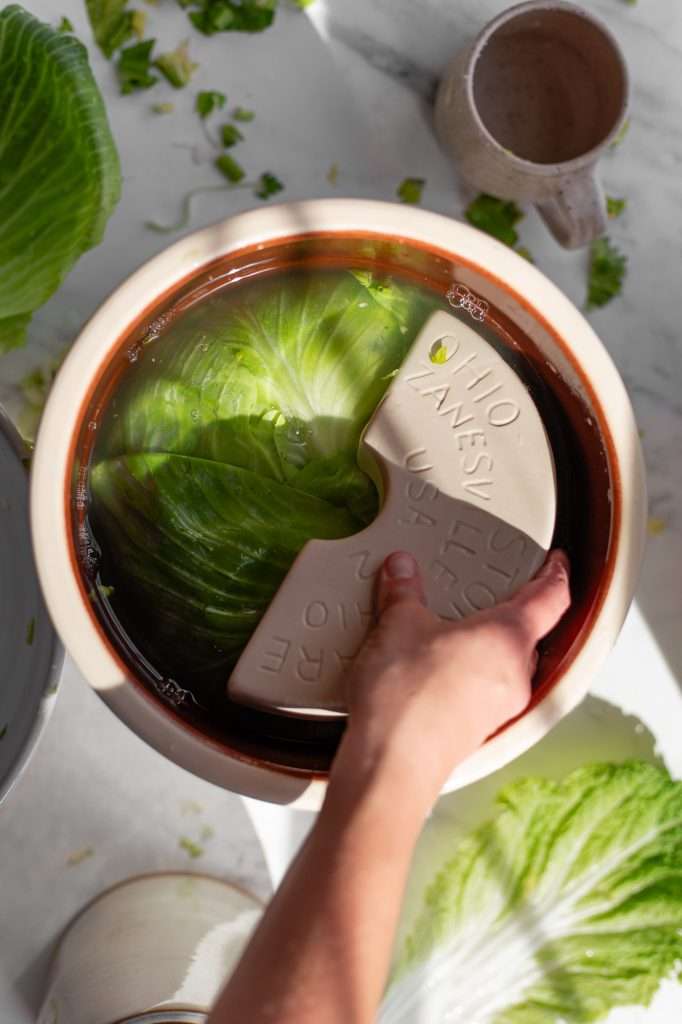Ingredients
2-Gallon Crock Recipe (see notes for other volumes)
- 3,575 grams cabbage
- 825 grams water
- 550 grams leeks, chopped*
- 550 grams celery, chopped*
- 138 grams sea salt
- outer cabbage leaves
Equipment
- Lead-free Ceramic Crock
- Crock lid
- Ceramic Crock Weight
- Tight weave cloth
- rubber band or twine
- Kitchen scale
- Large mixing bowls
- Knife
- Cutting Board
- Colander
Instructions
- Wash all of your equipment well. Wash your crock, lid, and weights with natural soap and hot water. Rise all the soap away, then rinse with distilled white vinegar. For new or thrifted weights, wash with hot water and soap, then soak the unglazed ceramic weights in 10% salt water for a few hours.
- Remove the outer cabbage leaves, keeping them as intact as possible. Rinse them with cool water and set aside.
- Rinse the cabbage and other vegetables.
- Using a kitchen scale, weigh out the designated amounts of cabbage, leeks, and celery in grams. I like to quarter the cabbages and weigh them in chunks before chopping them into shreds.
- Chop your cabbage, leeks, and celery (or whatever vegetables/fruit you’re adding in). If using leeks, rinse them in a colander after chopping since they can hold dirt.
- In a separate small bowl, weigh the designated amount of sea salt.
- In a pitcher or large mason jar, measure out the water.
- Dissolve about half the sea salt in the water and set the other half aside.
- Place your crock near where you plan to store it for the duration of fermentation. Once full, it will be very heavy and difficult to move.
- Layer some chopped cabbage, leeks, celery, and a little bit of sea salt into the crock. Toss it around to mix in the salt as you go, and tamper it down with your fist. Keep layering, mixing, and tampering until you’ve added all the salt and vegetables.
- Wipe the sides with your hands to make sure no vegetable pieces are stuck to the sides. There should be a good bit of headspace in the crock. You need this headspace to allow room for the weights and brine release.
- Take the reserved outer cabbage leaves and tuck everything in. Tuck the cabbage leaves over the top and around the sides, securing all the cabbage shreds under the large leaves.
- Place the weight onto the leaves.
- Pour the salt water over the top.
- Place the lid and tight weave cloth on the crock. You can secure the tight-weave cloth under the lid or over it with twine or a rubber band, but you need this to prevent fruit flies from getting in.
- Allow the sauerkraut to ferment in the crock at room temperature for 21-28 days.
- Open the crock once a day to check and make sure the sides and lid are clean, and everything is submerged. If necessary, press down on the weight with clean hands to release the gases.
- After fermentation at room temperature for 21-28 days, remove the weight and the outer leaves. Pack the sauerkraut into jars, top with brine, and store in the refrigerator.



